Downtown History
The factory district, located south of the railroad tracks, was the economic engine that drove High Point’s growth. Above the tracks, on North Main Street, was a showcase of the city’s economic prosperity. Shops, banks, offices, restaurants, hotels and movie palaces filled the first three blocks.Even with growing suburbs pulling more residents outside of the city center, North Main Street was High Point’s commercial district for more than half a century.
Forward High Point would like to thank the High Point Museum and High Point Historical Society for providing us with all content being used within this web page. The photos and captions are provided by the High Point Museum as part of the High Point Historical Society’s Collection.
To learn more, please visit this “Virtual Exhibit.”
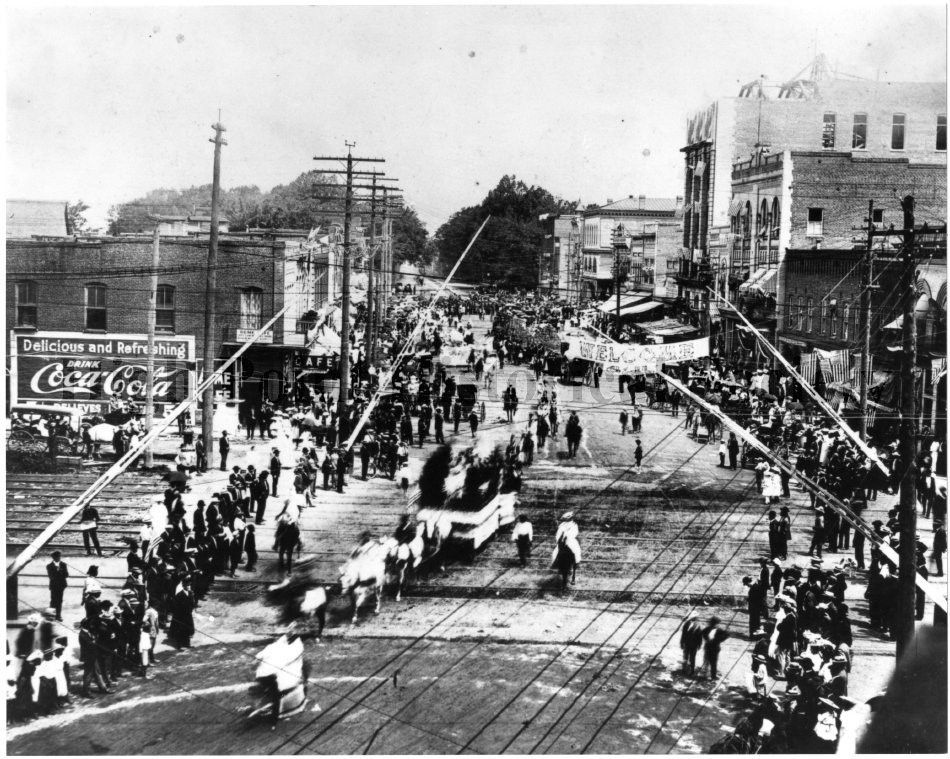 High Point owed its prosperity to industry. By 1907, when this photograph was taken, the revenues from furniture, textiles and tobacco were fueling urban growth. Construction on High Point’s first skyscraper, the North Carolina Savings Bank and Trust Company building, had just started and would be completed the following year. Today it is more commonly called the Wright Building, but remains one of the architectural landmarks of what was once High Point’s commercial district. Gift of Jesse C. Brinson. Object ID: 1998.044
High Point owed its prosperity to industry. By 1907, when this photograph was taken, the revenues from furniture, textiles and tobacco were fueling urban growth. Construction on High Point’s first skyscraper, the North Carolina Savings Bank and Trust Company building, had just started and would be completed the following year. Today it is more commonly called the Wright Building, but remains one of the architectural landmarks of what was once High Point’s commercial district. Gift of Jesse C. Brinson. Object ID: 1998.044
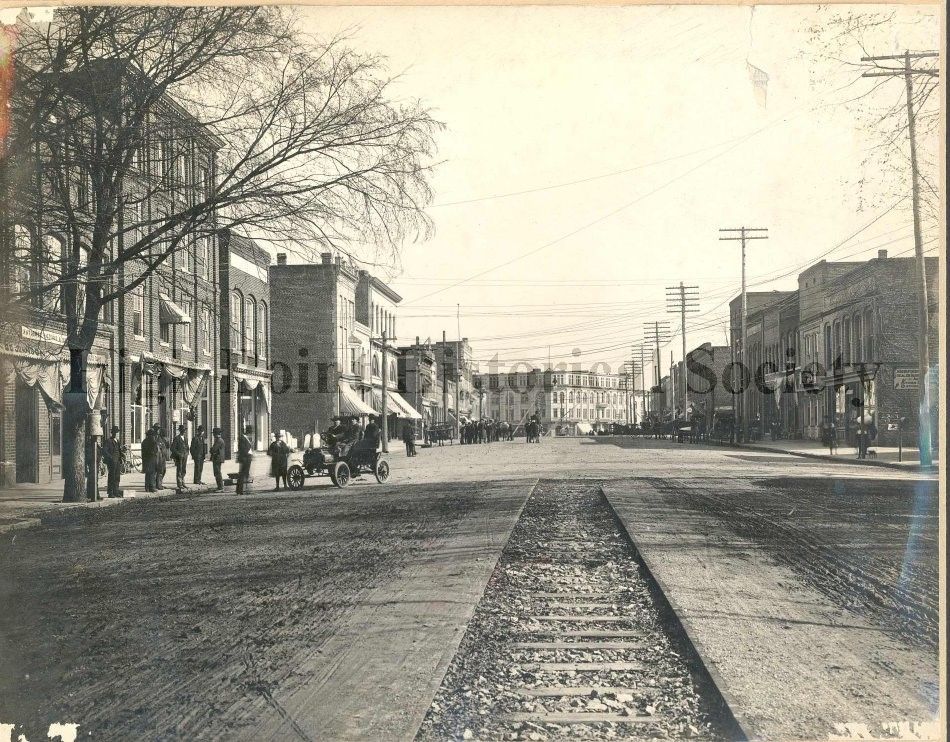 High Point’s economic success in manufacturing stimulated its physical expansion. Ultimately, it became impractical for citizens living outside of downtown to commute by walking or be conveyed by horse. Plans for streetcar lines were initiated in 1902. By 1912, nine trolley cars operated over six miles of track. Their use made feasible the further extension of North Main Street, opening up new land for residential development. Automobiles were introduced to the city by 1906. Their proliferation made streetcars redundant, and use of the trolleys was discontinued by the late 1920s.
High Point’s economic success in manufacturing stimulated its physical expansion. Ultimately, it became impractical for citizens living outside of downtown to commute by walking or be conveyed by horse. Plans for streetcar lines were initiated in 1902. By 1912, nine trolley cars operated over six miles of track. Their use made feasible the further extension of North Main Street, opening up new land for residential development. Automobiles were introduced to the city by 1906. Their proliferation made streetcars redundant, and use of the trolleys was discontinued by the late 1920s.
Gift of the High Point Chamber of Commerce. Object ID: 1998.028.002
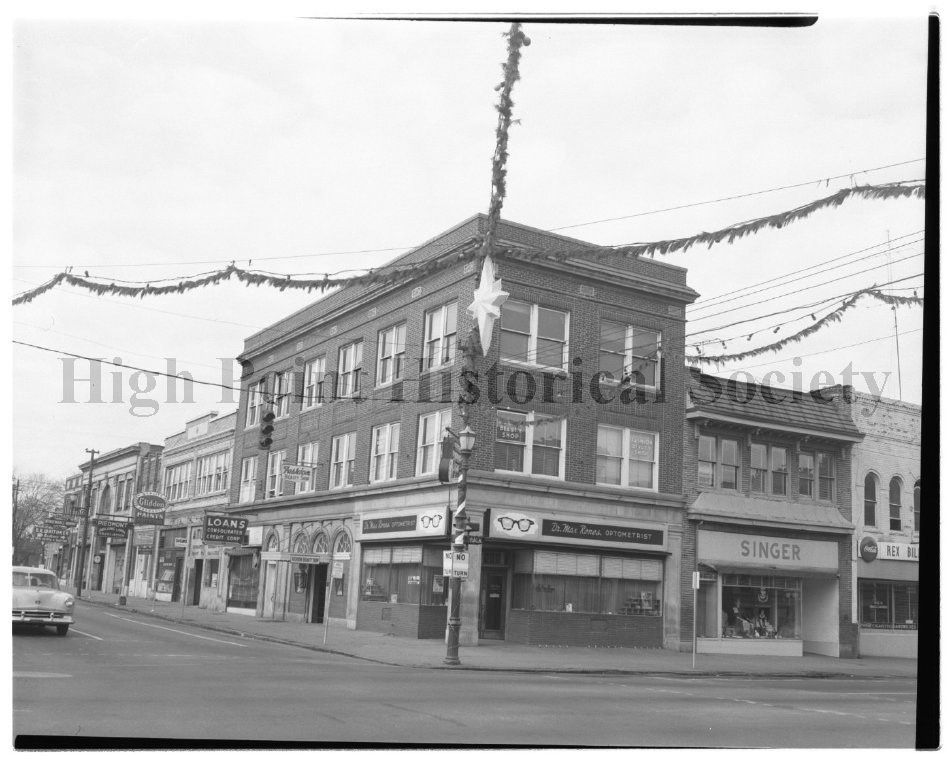 The Penny Building was erected in 1924 at the intersection of North Main and West Washington Streets. In the late 1920s, Stephen C. Clark, a local amateur historian and the real estate developer of the Emerywood neighborhood, had his offices here. This section of Washington has since been renamed West Kivett Drive, but the Penny Building still provides the landmark for that corner of North Main Street.
The Penny Building was erected in 1924 at the intersection of North Main and West Washington Streets. In the late 1920s, Stephen C. Clark, a local amateur historian and the real estate developer of the Emerywood neighborhood, had his offices here. This section of Washington has since been renamed West Kivett Drive, but the Penny Building still provides the landmark for that corner of North Main Street.
Gift of the High Point Enterprise. Object ID: 53—948
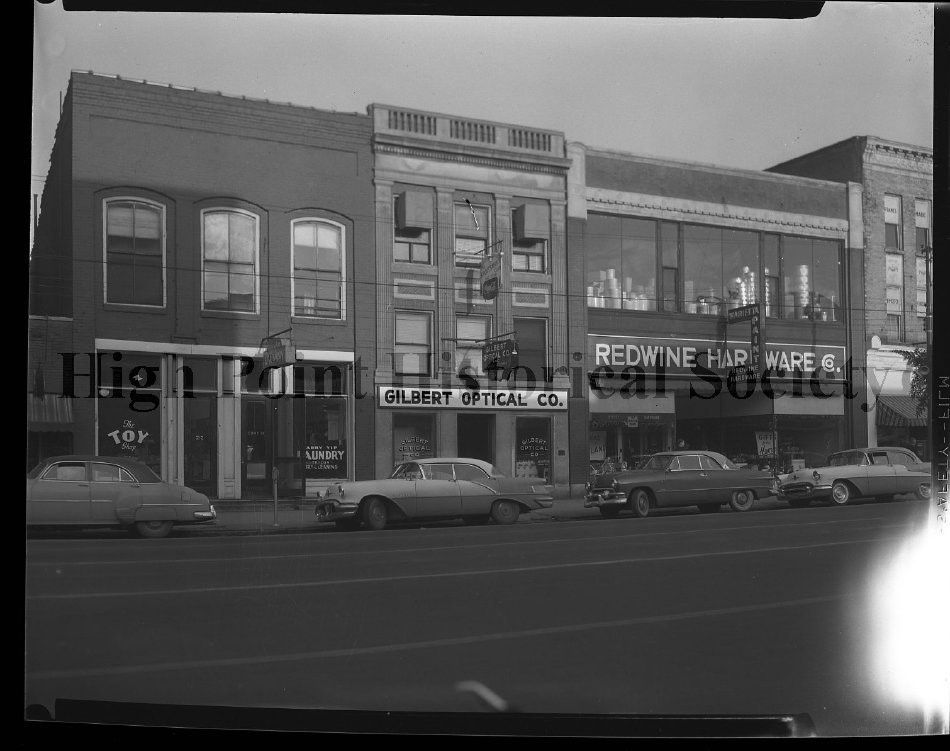 In downtown High Point’s heyday, businesses competed for storefronts that faced onto Main Street. While it was highly desirable to be on the city’s main thoroughfare, lots were limited. A solution that emerged was for businesses to share space, and even addresses, in densely occupied commercial blocks. For example, in this photograph, the High Point News Shop and Harry Yip Laundry share the ground floor of 212 North Main Street.
In downtown High Point’s heyday, businesses competed for storefronts that faced onto Main Street. While it was highly desirable to be on the city’s main thoroughfare, lots were limited. A solution that emerged was for businesses to share space, and even addresses, in densely occupied commercial blocks. For example, in this photograph, the High Point News Shop and Harry Yip Laundry share the ground floor of 212 North Main Street.
Gift of the High Point Enterprise. Object ID: 56—1896
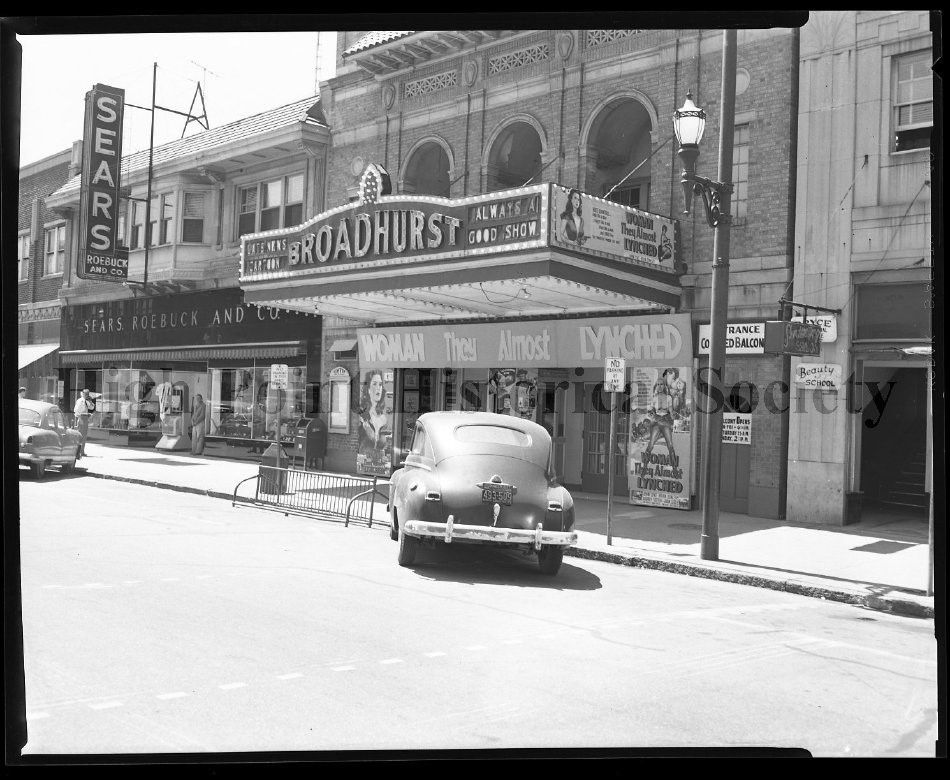 The movies were a popular form of entertainment during High Point’s golden age, and no fewer than five theaters were located downtown. The Broadhurst Theater, at 325 North Main Street, was only two blocks north of the Rialto and Carolina theaters, which were themselves only a few blocks north of the Paramount and Center theaters. The Broadhurst was conveniently located across the street from the Sheraton Hotel, occupying one of several classically—inspired buildings that were erected on North Main Street during the early 20th Century.
The movies were a popular form of entertainment during High Point’s golden age, and no fewer than five theaters were located downtown. The Broadhurst Theater, at 325 North Main Street, was only two blocks north of the Rialto and Carolina theaters, which were themselves only a few blocks north of the Paramount and Center theaters. The Broadhurst was conveniently located across the street from the Sheraton Hotel, occupying one of several classically—inspired buildings that were erected on North Main Street during the early 20th Century.
Gift of the High Point Enterprise. Object ID: 53—502
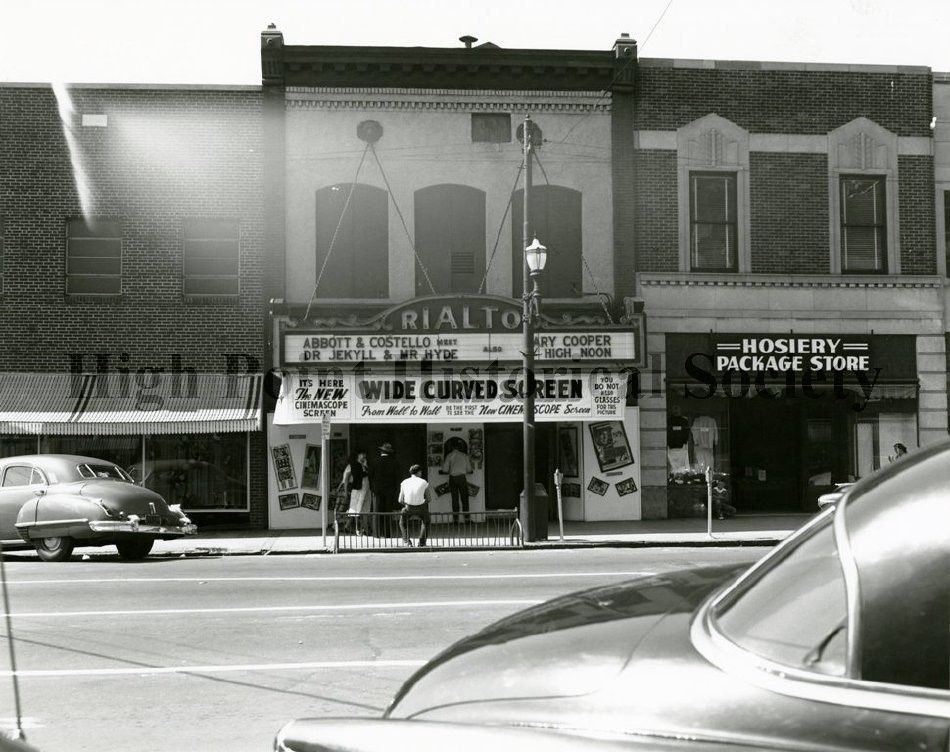 The Rialto Theatre, located at 107 North Main Street, was within walking distance of the Elwood Hotel, the retail district, multiple restaurants, and the Southern Passenger Railway Depot.
The Rialto Theatre, located at 107 North Main Street, was within walking distance of the Elwood Hotel, the retail district, multiple restaurants, and the Southern Passenger Railway Depot.
Gift of the High Point Enterprise. Object ID: 53—812
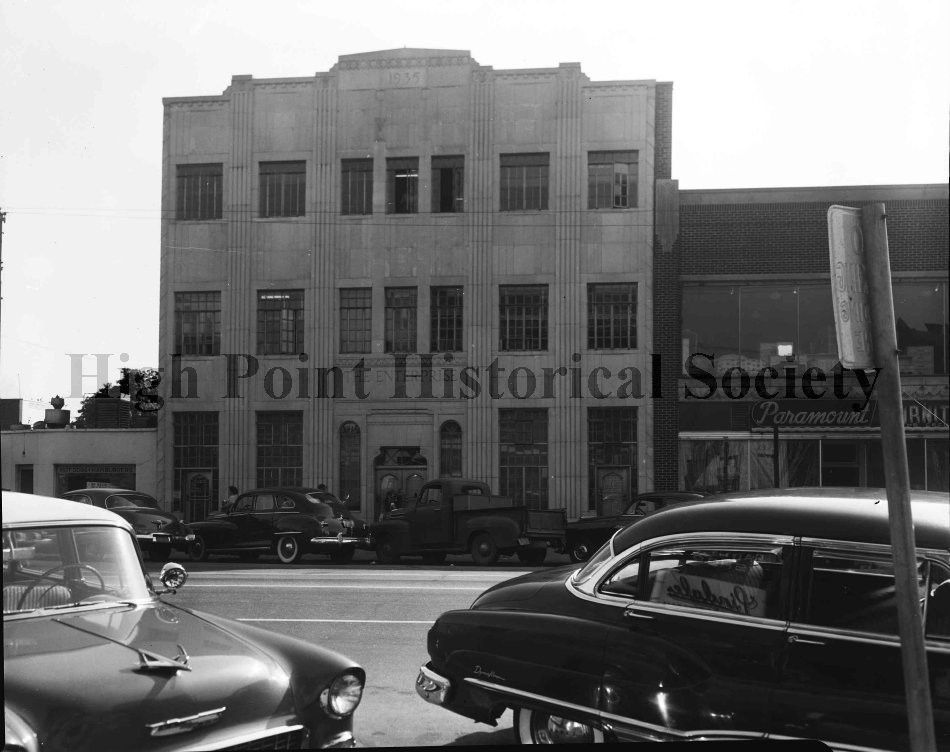
The High Point Enterprise building, located at 305 North Main Street, was built in the Art Deco style of architecture that was fashionable in High Point in the 1930s. When it was completed in 1935, to a design by architect Tyson Ferree, the building was only two stories tall. The third floor was not added until after World War II.
Gift of the High Point Enterprise. Object ID: 56—787
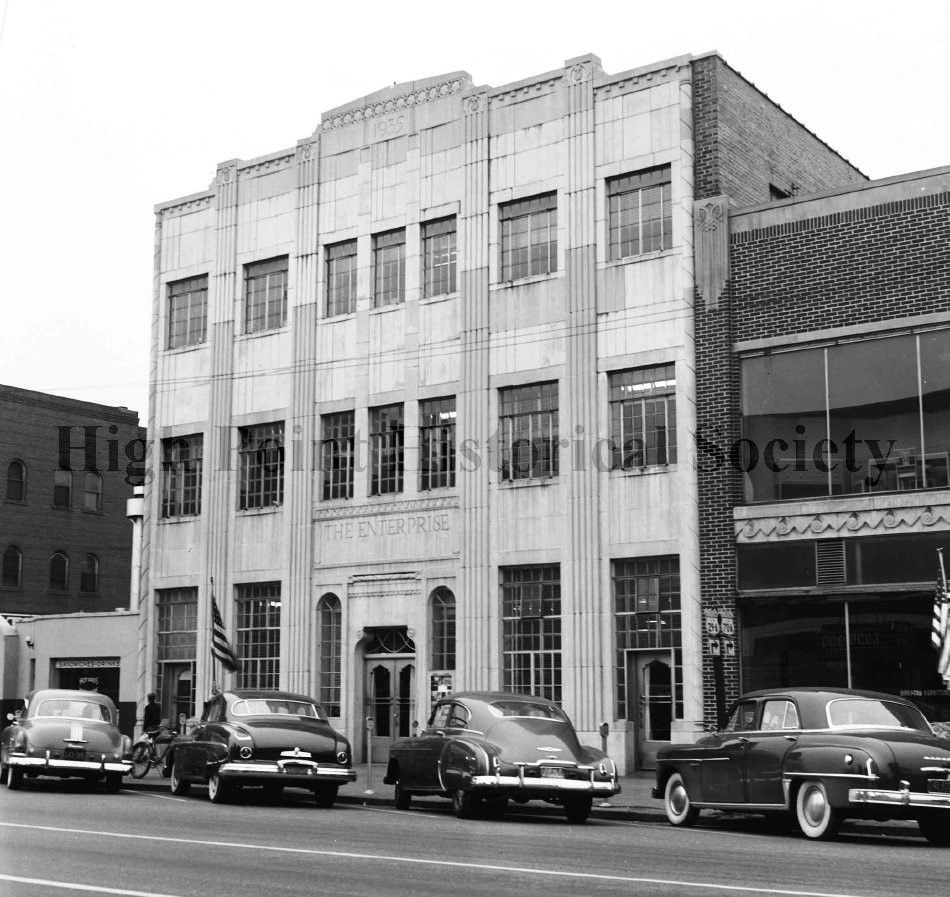 High Point’s daily newspaper, the Enterprise, was published here from approximately 1935 to 1970, when it moved to new premises at 220 Church Street. Prior to 1935, the newspaper was published across the street, at 308 North Main. Earlier still, it was printed in a shop located farther south at 118 North Main Street, next to the old Wachovia Bank building.
High Point’s daily newspaper, the Enterprise, was published here from approximately 1935 to 1970, when it moved to new premises at 220 Church Street. Prior to 1935, the newspaper was published across the street, at 308 North Main. Earlier still, it was printed in a shop located farther south at 118 North Main Street, next to the old Wachovia Bank building.
Gift of the High Point Enterprise. Object ID: 50—794

Before fast food chains, downtown diners offered quick, simple fare to movie—goers and shoppers as well as office workers. One option, the Rainbow Diner, stood at the corner of North Main and English Streets, beside the offices of the High Point Enterprise. Until the diner’s closure in 1960, it was one of several restaurants located at that intersection. In 1956, when this photograph was taken, the Eagle Sandwich Shop and the Princess Cafe stood on the opposite side of the street.
Gift of the High Point Enterprise. Object ID: 56—1482 A
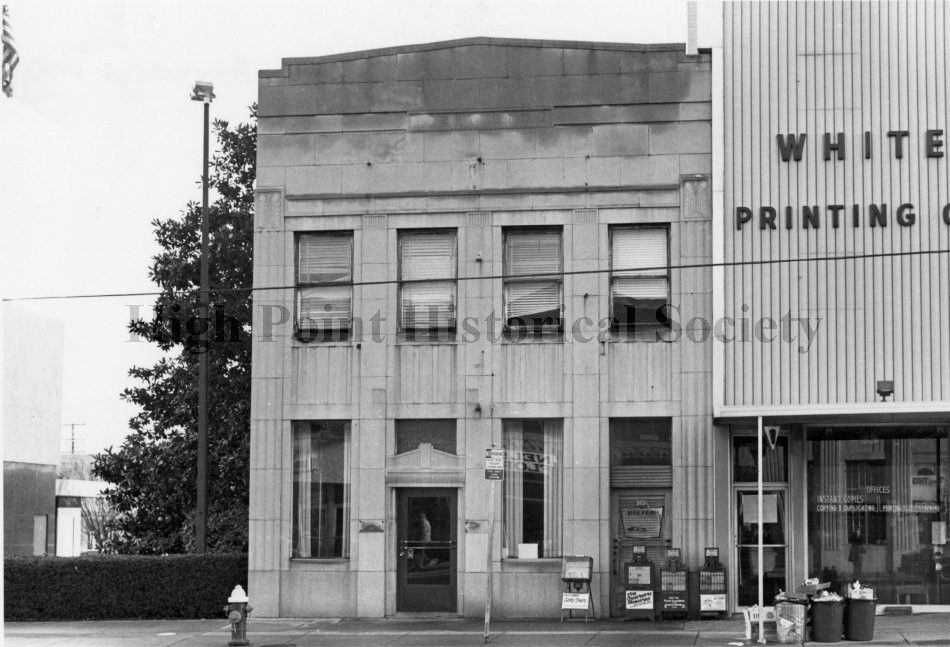 The Princess Cafe was a fixture of North Main Street. Founded in 1922 by proprietor William Jeremiah Pappas, the restaurant served customers until 1976. The Terry Building at 310 North Main Street, in which the cafe resided for most of its lifetime, was constructed in the Art Deco style. It bears a striking resemblance to its neighbor across the street, the High Point Enterprise building.
The Princess Cafe was a fixture of North Main Street. Founded in 1922 by proprietor William Jeremiah Pappas, the restaurant served customers until 1976. The Terry Building at 310 North Main Street, in which the cafe resided for most of its lifetime, was constructed in the Art Deco style. It bears a striking resemblance to its neighbor across the street, the High Point Enterprise building.
Gift of Roy Shipman.
Object ID: 2000.006.104
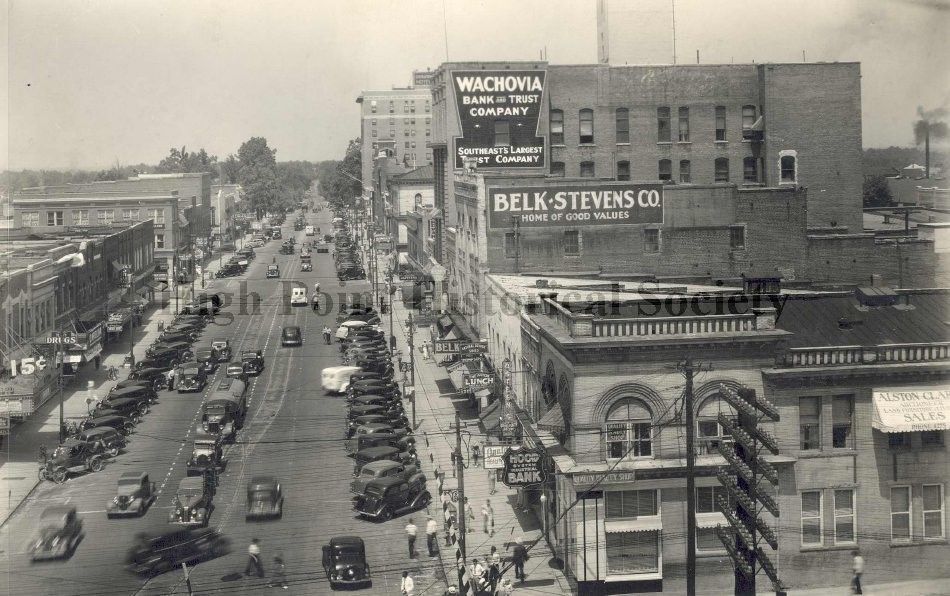 Whereas the first three blocks of North Main Street were a hive of activity, beyond them was a quieter home for High Point’s citizens. Apartment buildings and a few churches lined the street itself, while residential developments sprang up further north and along intersecting roads. Many physicians also chose to live and practice medicine on North Main, away from the noise and bustle of the city’s thriving commercial heartland.
Whereas the first three blocks of North Main Street were a hive of activity, beyond them was a quieter home for High Point’s citizens. Apartment buildings and a few churches lined the street itself, while residential developments sprang up further north and along intersecting roads. Many physicians also chose to live and practice medicine on North Main, away from the noise and bustle of the city’s thriving commercial heartland.
Object ID: 1998.028.004
AN OVERVIEW OF OUR HISTORIC DOWNTOWN
by Marian Inabinett, Curator, High Point Museum
While the birth and growth of a city’s central business district is usually well-known, numerous complex reasons usually lead to its decline. As leaders now work to revitalize High Point’s city center, it seems appropriate to look back at the old downtown to understand what factors contributed to its vibrancy over the years.
The intersection of the old plank road and the new North Carolina Railroad developed into a crossroads community of inns and general stores. Early town leaders recognized that this logistical advantage could be beneficial to industry, and their entrepreneurial spirits jumped into manufacturing. The town’s growth exploded once the North Carolina Railroad route became part of the Southern Railway system, connecting High Point to a vast national transportation network. The passenger and freight depots created the hub of an urban boom-town by the early 1900s. High Point radiated outward, crowding downtown blocks with houses, schools, churches, furniture factories, cotton mills, banks, and a variety of local businesses.
While the Victorian homes of the first manufacturers gave way to new buildings and businesses on Main Street, other commercial districts developed nearby – on Washington Street for the African American community and in the West End for workers in the hosiery factories. The residential exodus away from the city center in the 1920s seemed only to increase the standing of downtown as the vital heart of the city where citizens came to work, shop, worship, meet the train, and be entertained for nearly 50 years.